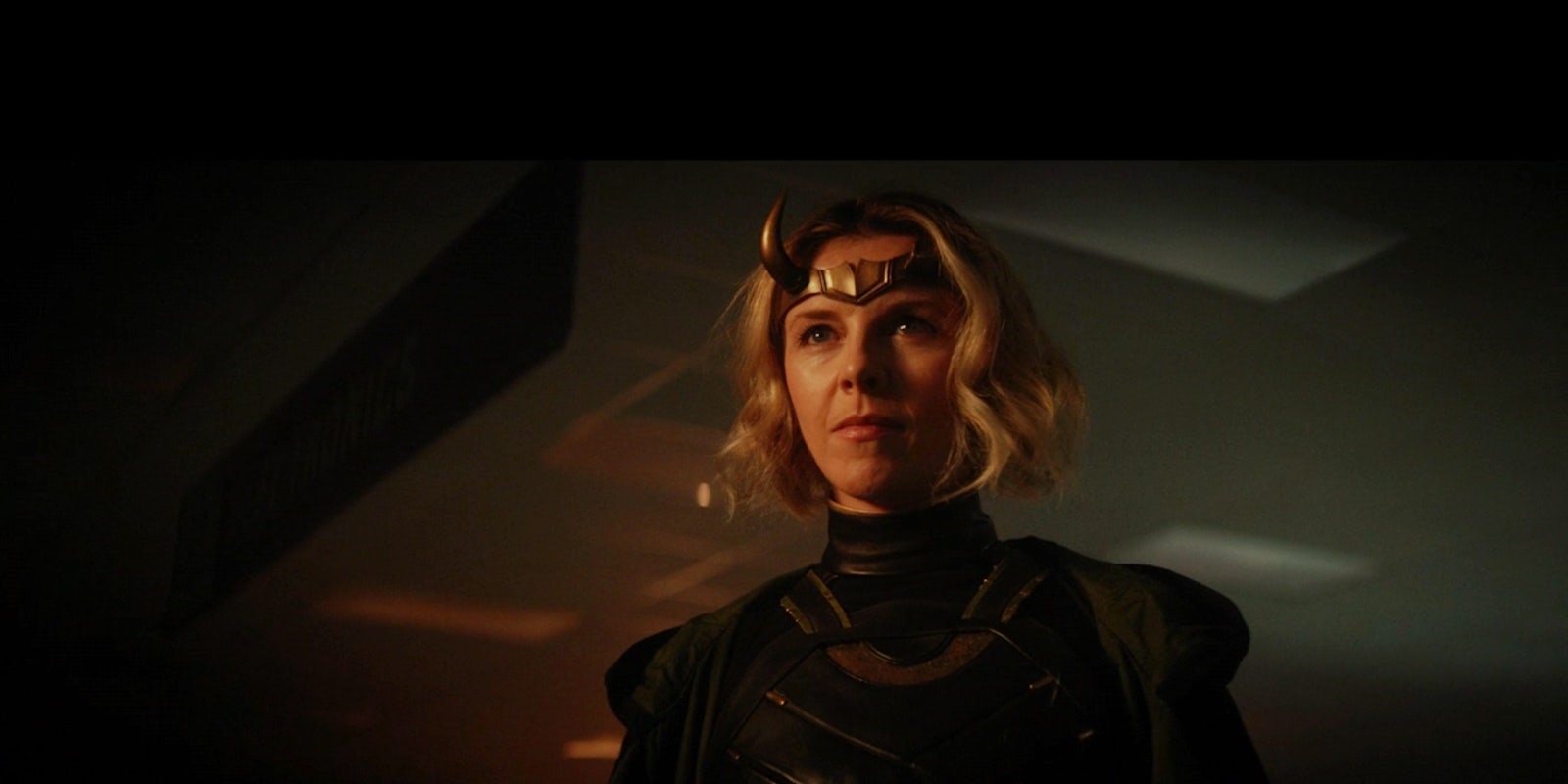This post includes spoilers for Loki episode 2.
Thanks to leaked photos from the Loki film set, many fans already guessed that English actress Sophia Di Martino would play a female version of Loki. Episode 2 confirmed those rumors, setting the scene for an intriguing conflict. Who better to outwit Loki… than another Loki?
As a shapeshifter, Loki can theoretically take on any appearance. However, the TVA also revealed that different timelines include different Loki variants. The show follows Tom Hiddleston’s Loki (let’s call him Loki Prime) as he helps the TVA hunt down a dangerous (and unseen) Loki variant, ending episode 2 with a big confrontation. After swapping between a few temporary human bodies, this mysterious new Loki reveals herself in the form of a blonde woman (Sophia Di Martino).
Comics fans are already familiar with this kind of alternate-universe hijinks. For example, one strand of the Marvel Multiverse includes a world where Tony Stark is a woman. The situation with Loki may be little more complicated, however. While Di Martino gets an exciting introduction, some fans may see her role a cop-out, using alternate timelines to avoid discussing Loki Prime’s gender fluidity on-screen. Basically, it seems like Loki can be a woman… but only if it’s a different Loki from the one in the main MCU timeline.
Loki is genderfluid in Marvel comics canon, an idea that began with 2008’s “Lady Loki” storyline, when Loki was depicted as a woman for about a year. After this, comics like Loki: Agent of Asgard began to offer a more nuanced portrayal of Loki’s gender identity and shapeshifting powers. One comic sees Odin describe his three children as his son (Thor), his daughter (Angela), and “my child who is both,” referring to Loki.
For all intents and purposes, the MCU depicts Loki as a cisgender man. But this changed when Marvel shared an image of Loki’s case file in the new Disney+ show, labeling the character’s sex as “fluid.” Director Kate Herron said Loki’s genderfluidity would be “acknowledged” in the show, but it’s unclear what that actually means. After all, Disney is very conservative when it comes to LGBTQ+ representation. That case file may be as far as it goes, but we’re only two episodes into a six-episode season, so that’s an open-ended question for now.
Sophia Di Martino’s Loki offers a compelling foil for Loki Prime, and a tempting cliffhanger leading into episode 3. How does her timeline differ from the MCU? Why does she seem so much scarier and more competent than Avengers-era Loki Prime? And what motivated her to set off the timebomb at the end of the episode? Even if you’re the kind of fan who already guessed Di Martino’s role, her arrival makes an exciting impact. But if Disney intentionally introduced Lady Loki as an alternate-universe character instead of depicting Loki Prime as genderfluid, then that’s a pretty disappointing decision. However, Di Martino’s character may not be who she seems.


